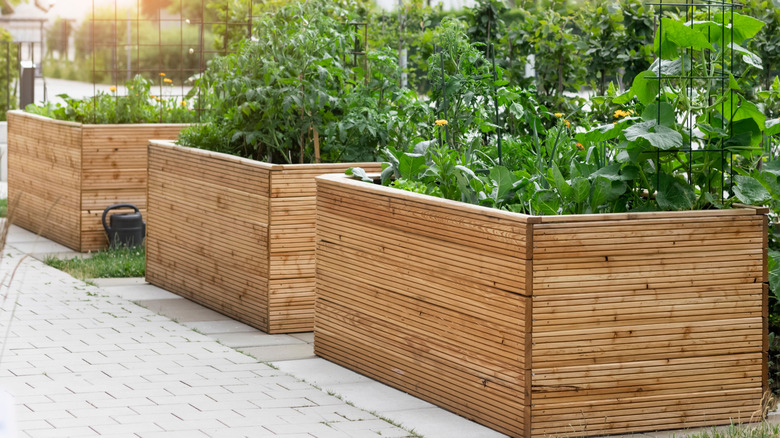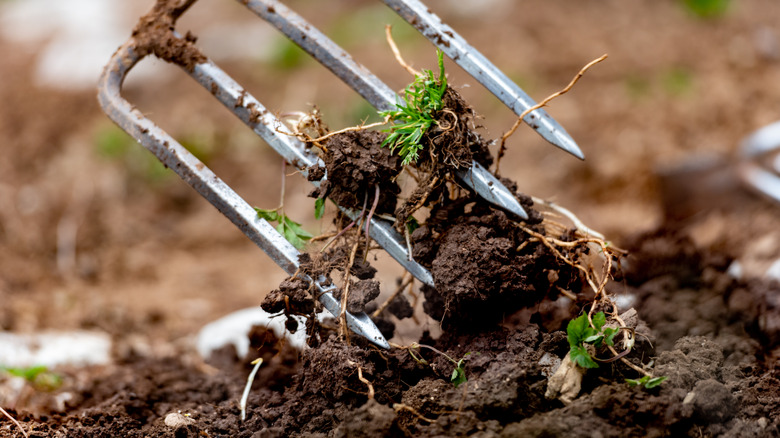How To Care For Your Raised Garden Bed After Heavy Rain
With changing seasons comes unpredictable weather — and that can include a deluge of precipitation. While it can be worrisome to look outside and see your raised garden beds swimming in a pool of rainwater, potential problems will actually most likely occur after the rainwater has drained away. An influx of water causes soil to compact, leaving little room for the air bubbles that provide oxygen for the roots of your plants.
One of the advantages of raised garden beds is that they provide a more aerated soil environment than in-ground garden beds, but heavy rainwater can indeed counteract that benefit. Too much rain can cause other problems, too, like the growth of bacteria and fungi. Check out our guide to starting a raised bed garden — the soil you choose can really make a difference in drainage after a storm.
Luckily, you don't have to sit idly by as your raised garden beds drown your precious plants after a particularly heavy rainstorm. Once the storm has passed and most of the water has drained from the surface of your raised beds, get outside and check for soil compaction. You can do this in tandem with other garden tasks that are a must after a heavy rain, like critter control and weed maintenance. As time goes on following the rain, you'll want to keep a close eye on your raised beds, monitoring your plants for signs of disease.
Post-storm raised bed care
After the rain has ceased, it's time to begin attending to your raised garden beds. Your first order of business should be to remove any broken or damaged foliage — immediately pruning back these plants to healthy growth can encourage the healing process to begin. If you have mulched around the plants in your raised garden beds, try removing the mulch for a while to let the soil dry out. Dealing with the soil in your raised beds can begin only once the soil has dried out a bit. Otherwise, you risk compacting the soil even more. Break up the compacted soil — it's okay to physically loosen up the soil around your plants with your hands or a gardening fork. Remember to be gentle and try not to disturb the roots.
Caring for waterlogged plants in your raised beds doesn't stop in the few days after a storm. You'll want to keep an eye out for signs of disease, like wilting stems or discolored leaves, in the weeks following the heavy rain. If you notice spots on your plants' leaves, prune away the affected foliage and consider using a fungicide to treat the plant. Yellowing leaves can indicate a nitrogen deficiency caused by leaching due to the heavy rainfall — if this is the case, consider fertilizing with a nitrogen-based fertilizer. If your raised beds are subject to weeks of heavy rainfall, your plants might develop root rot. Read more about root rot and how to deal with it here.

